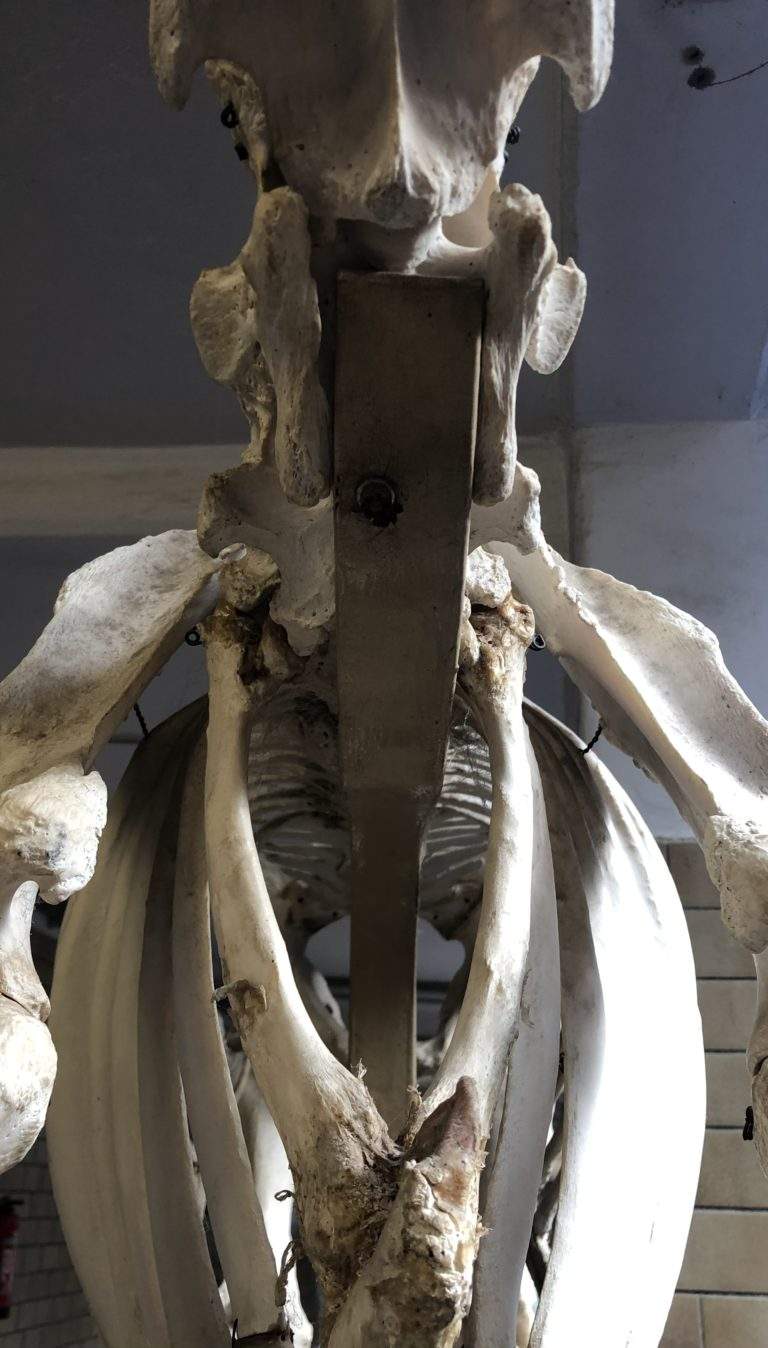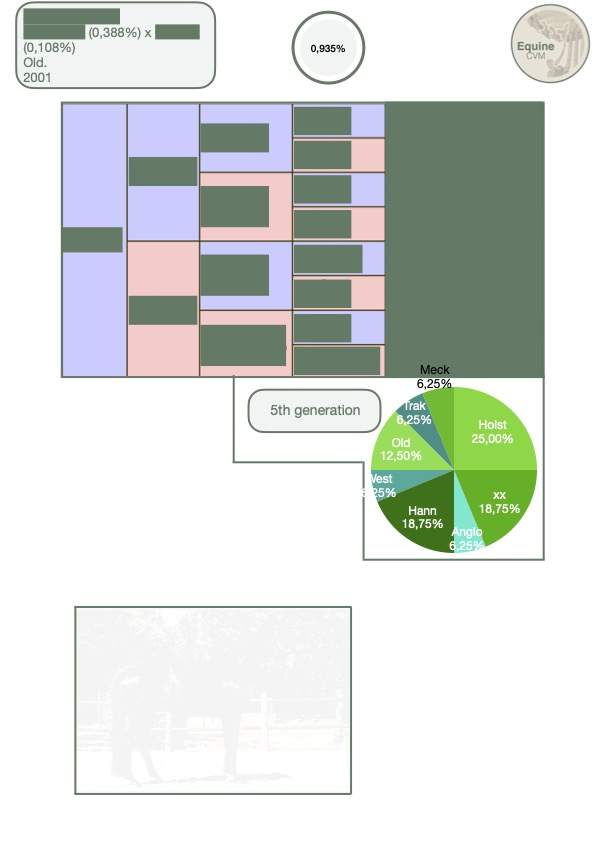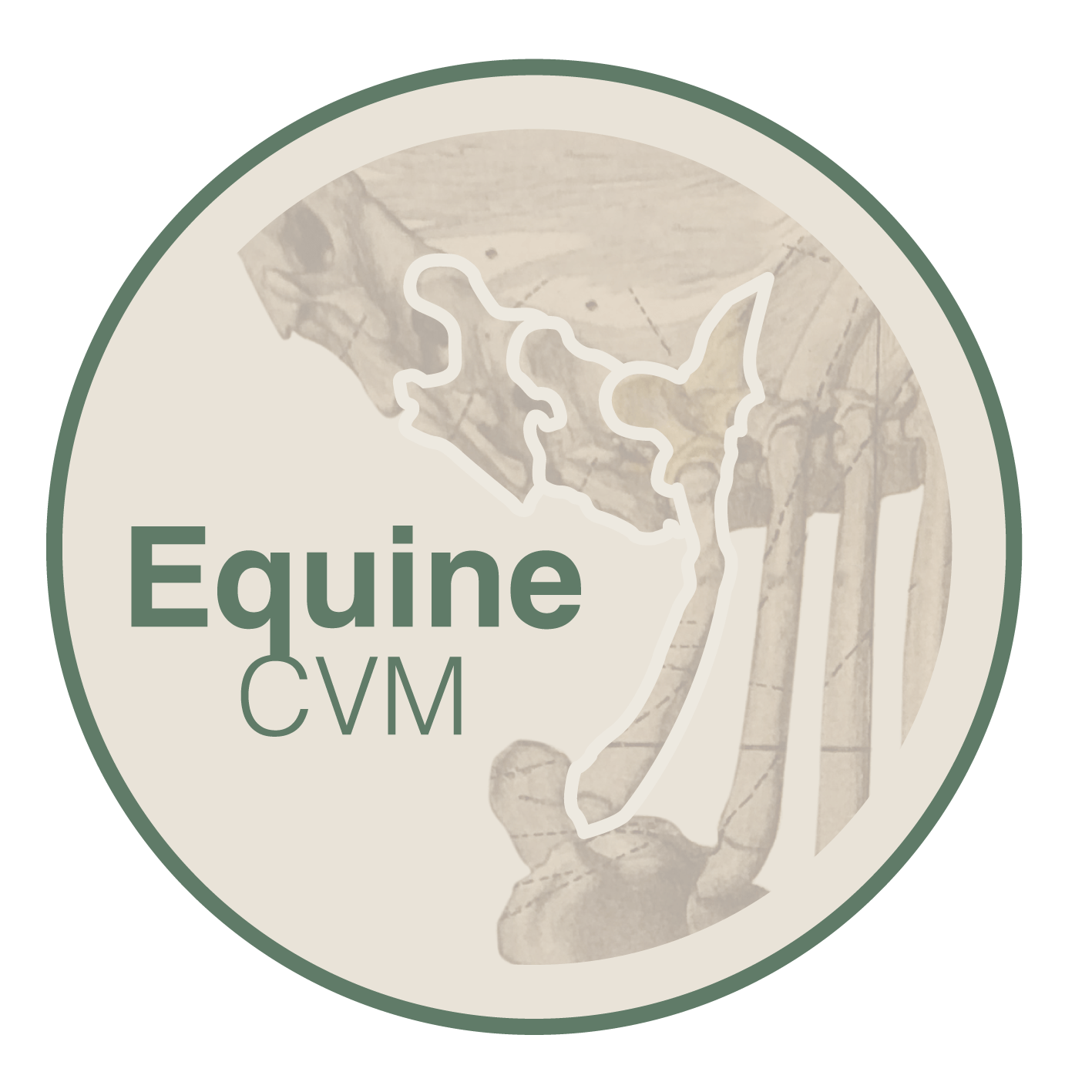
How to deal with ECVM in breeding
As long as no genetic test is available, we will have to make do with the information available about the ancestors. This information can be, for example, studying skeletons in museums. There are skeletons of stallions on display worldwide that have had a lot of influence in breeding. In addition, we also see certain bloodlines more often in the pedigree of horses with ECVM than in horses without ECVM. If one wants to reduce the chance of ECVM during breeding, it is therefore wise not to inbreed on these lines. Research has shown that ECVM has been present for generations in various thoroughbreds lines. Because the current sport horse consists of a high percentage of thoroughbreds, we see it in the horses of today.
If we want to make a combination, we not only look at the parents themselves, but also at the ancestors up to 9 or 10 generations back. Sometimes this leads to enlightening insights, because certain bloodlines then occur very often in a certain animal.
By looking at these bloodlines, in combination with the percentage of inbreeding, and which lines have been bred in, an attempt can be made to reduce the chance of ECVM in the foal. NOTE: the probability can never be completely ruled out in this way.
Because we have found in practice that parent animals without X-ray characteristics of ECVM still produce offspring that are showing, there is a very good chance that the gene is passed on invisibly as a carrier. Daarom is het van belang dat er goed gekeken wordt dat er geen verdachte voorouders zich weer kruisen.
Thanks to the collaborations and cooperation of many breeders and horse owners, an invaluable database has been created. This database allows us to think along with breeders to breed as healthy a foal as possible.
What can we calculate
* There are several bloodlines in which we see a lot of ECVM and bloodlines in which it occurs less. Here the database will provide more clarity in the analysis.
*Het percentage inteelt geeft ook informatie. We zien als de inteelt hoog is er meer kans is op erfelijke afwijkingen en dus ook op ECVM. Bij een inteelt berekening zullen bepaalde voorouders weer bij elkaar komen. Dit kan goede maar ook slechte eigenschappen met zich meebrengen. Welke voorouders er weer bij elkaar komen is dan ook van groot belang om te bekijken wanneer er naar een passende combinatie gezocht wordt.
*Not only the inbreeding of the horse itself, but also of the parents will be examined. Due to outcrossing, for example, the inbreeding can be 0%, but both parents can still be burdened with inbreeding.
- Bloodline in database analysis for ECVM
- Inbred horse
- Inbred ancestors
Wij adviseren voor een berekening een keuze te maken van 5 hengsten waarmee u de merrie gedekt zou willen hebben. Hiervan zal dan een fictieve aanparing gemaakt worden met de merrie en gekeken worden hoe deze bij elkaar komt.
Het inteelt percentage zal berekend worden en er zal gekeken worden welke voorouder in 9 generaties weer bij elkaar komen. Met deze berekening kan er een meer overwogen beslissing genomen worden en zal er sowieso geadviseerd worden om zo een groot mogelijke genenpoel te behouden.
disclaimer: the breeding advice is based on our own experience and collected information. No rights can be derived from the breeding advice. It is an approach that we think reduces the chance of inheriting ECVM. This chance is certainly not zero! So you can still breed a foal with ECVM.


